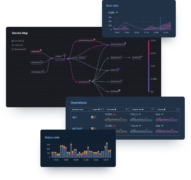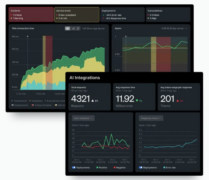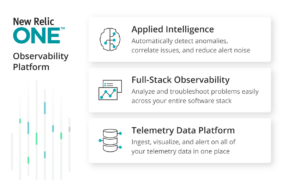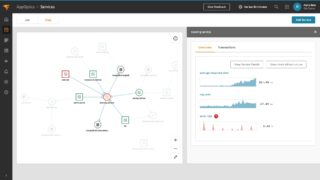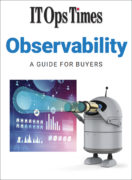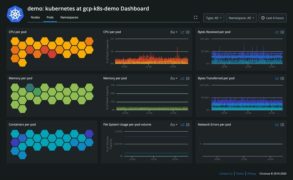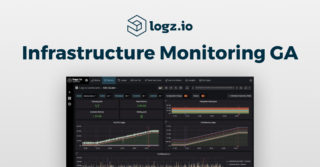A Guide to Monitoring Infrastructure and Applications
Application Performance Management (or Monitoring) is the practice of watching applications for anomalies, increased latency and data exchanges that impact the user’s experience. This has normally been tracked in Network Operations Centers (NOCs). There are numerous tools on the market created to help organizations identify problems and send alerts to the people best suited to remediate the issues. Among the drawbacks of this approach is the number of “false positive” results returned.
Older APM systems have not been architected for today’s development methods of microservices, containers and cloud-native applications. More modern implementations consist of instrumenting applications with software that detects errors, targets the root cause, and suggests fixes — or in some cases automatically does remediation — to prevent or reduce downtime.
The role of APM has traditionally been to flag issues in code that affect performance. To resolve those issues, it has been necessary to understand all the spaghetti code of a monolithic application – written by multiple developers who often do not have an overarching view of the entire application – and then deconstruct that code to get to the root cause. Here are some articles to address the new APM architectures
apm Resources
Logz.io brings APM to its observability platform with release of App 360
Logz.io, which produces the Open 360 observability platform, has announced the release of a new product called App 360. App 360 improves the Open 360 portfolio by providing functionality for Application Performance Monitoring (APM) use cases in the observability platform, at a lower cost that most APM solutions, Logz.io explained. “App 360 takes everything that’s … continue reading
New Relic launches APM solution for AI apps
New Relic has introduced its New Relic AI Monitoring (AIM), an application performance monitoring (APM) solution designed specifically for AI-powered applications. AIM was made to offer engineers enhanced visibility and insights throughout the AI application stack, facilitating easier troubleshooting and optimization of AI applications in terms of performance, quality, cost, and responsible AI use, according … continue reading
It’s time to embrace Monitoring-as-Code
Infrastructure-as-Code (IaC) has revolutionized the management and provisioning of everything from local virtual machines to exotic AWS services. It is time for Monitoring-as-Code (MaC) to do the same in the application performance monitoring (APM) and synthetic monitoring fields — and the good news is that everyone stands to benefit. Provisioning monitoring checks by hand is … continue reading
Riverbed releases beta for its Alluvio unified observability solution
Riverbed released a beta program for its new Alluvio Unified Observability solution that transforms massive amounts of data and alerts that lack context into actionable insights to empower all IT skill levels. “The Beta is exciting news for our customers as they help us define the leading Unified Observability solution in the market,” said Jim … continue reading
ITOps Times Open-Source Project of the Week: New Relic I/O
The observability company New Relic launched New Relic Observability (I/O), which is an open-source ecosystem of quickstarts. It hopes that the catalogue will empower software engineers to instrument, dashboard and alert their technology stack. The company found that while most engineers and developers are familiar with observability, there’s a huge gap in adoption with only … continue reading
Broadcom to help companies address new networking challenges with DX NetOps 21.2
Broadcom has announced the latest release of its network monitoring software DX NetOps. According to Broadcom, DX NetOps 21.2 is positioned to help companies address challenges created by hybrid work and 5G adoption. With an increasing number of technologies being deployed, there are more metrics to collect now, and 5G adoption also adds complexity and … continue reading
SolarWinds APM Suite gets new service map and web transaction recorder
SolarWinds is updating its application performance management (APM) suite to help simplify application and infrastructure management. The new updates are being made to SolarWinds’ AppOptics, Pingdom and Loggly solutions. “We believe IT pros need an APM solution with the capabilities to deliver full-stack visibility into the applications and infrastructure supporting business continuity and success that’s … continue reading
premium ITOps Observability Guide
You’ve likely heard the term observability being passed around for the past few years, and you might have assumed that it is just another marketing buzzword for monitoring. And you wouldn’t be alone in that thinking. Some experts would say that “Observability”, “AIOps” and “Application Performance Monitoring (APM)” are just terms used to distinguish between … continue reading
Circonus introduces Kubernetes monitoring solution in Spring 2020 release
Machine data intelligence platform provider Circonus is releasing a new Kubernetes monitoring solution to give IT teams health-based alert capabilities and ability to auto-scale. The monitoring solution is part of the company’s Spring 2020 release, which also features improvements to cloud monitoring, GCP marketplace availability, performance enhancements, and integration with Terraform. The Kubernetes monitoring solution … continue reading
New Relic introduces AI suite for incident detection, resolution
Observability platform provider New Relic today is releasing a new suite of AI capabilities to help customers more quickly detect, assess and mitigate critical incidents. On-call DevOps and site reliability are tasked with monitoring massive amounts of information, and a big challenge is to find signals from a flood of alerts, to take action on … continue reading
Logz.io Infrastructure Monitoring now available
Cloud observability platform Logz.io has announced a new metrics monitoring solution based on the open-source analytics and monitoring solution Grafana. Logz.io Infrastructure Monitoring is designed to help teams manage the costs of data with infrastructure and custom metrics. “The release represents a huge next step in our mission to provide the best open source for … continue reading
Is tracing for you? Probably not
Tracing is one of the hottest topics in observability and monitoring. There are myriad open-source projects, new startups, and entire conferences dedicated to it. But here’s the truth: While everyone building and maintaining software has heard of tracing, only a select few engineers are using it. In most cases, engineering effort and business resources would … continue reading

